SEO
SEO Writing Tools (Do You Really Need Them?)

SEO writing tools help you improve your content. Here are the top reasons why you need them and the tools I use to improve my writing.
If your goal is to rank high on Google, writing content without targeting any keywords is risky. You can get lucky, but ranking in Google without proper targeting will be hard.
A better approach is to analyze keyword data using a tool like Ahrefs and write your content using that knowledge.
Below, I’ll outline four ways you can use Ahrefs to help identify the best keywords to target.
1. To understand the keyword difficulty and competition
The first method I’d suggest is to add your keyword to Ahrefs’ Keywords Explorer and look at the Keyword Difficulty (KD) of the keyword.
For this example, I’ve used the keyword “typewriter.”
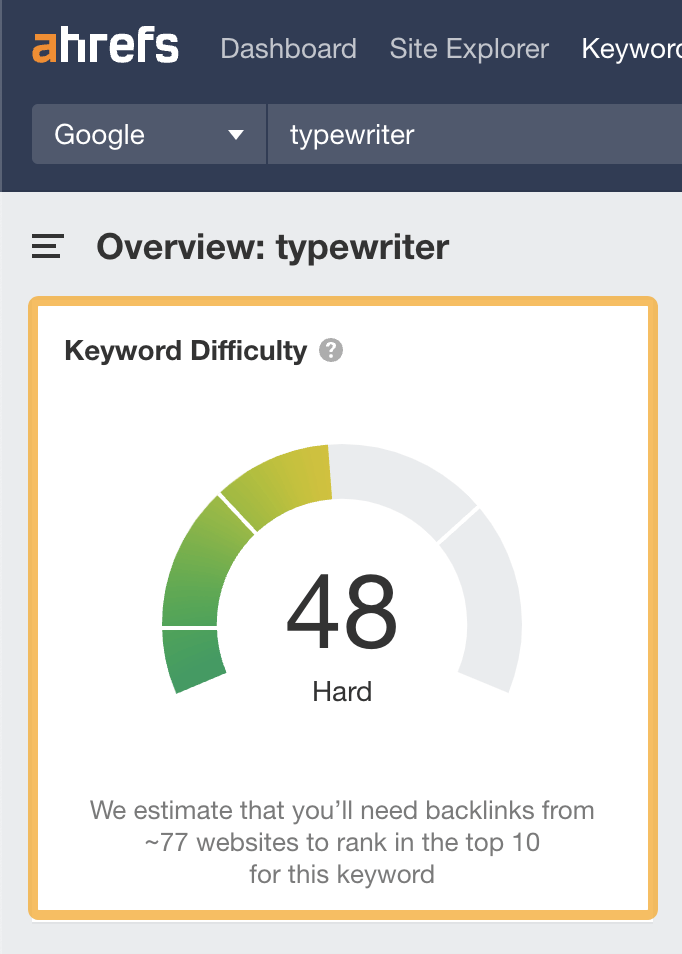
Ahrefs estimates it’s a hard keyword to rank for. We’ll need backlinks from ~77 websites just to rank on the first page of Google for this keyword.
Let’s contrast this with a more specific search. Let’s say we’re looking for this typewriter song; we might then enter “leroy anderson typewriter.”
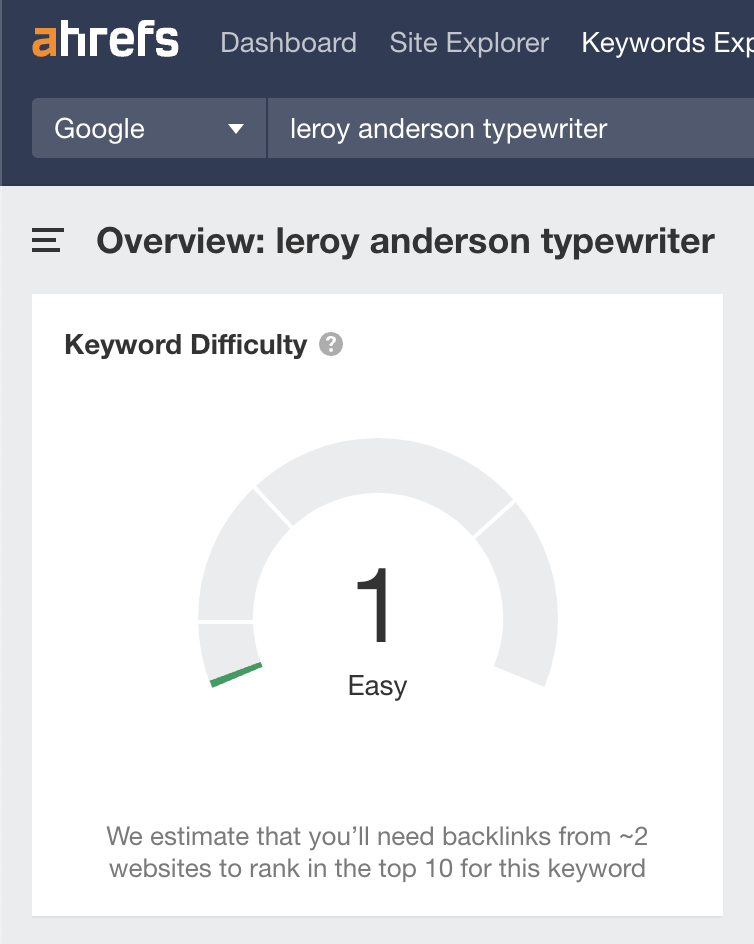
Ahrefs estimates that this is a much easier keyword to rank for. We’ll need backlinks from only ~two websites to rank on the first page of Google.
The bottom line here is that not all keywords are created equal. So choose your battles (and your keywords) carefully.
2. To identify low-competition keywords
Let’s return to Keywords Explorer, plug in a keyword phrase, and head over to the Matching terms report.

In this example, for the keyword “kimchi recipe,” we can’t see many low-competition keywords.
To get the lowest competition keywords, we’ll need to add a filter and set the KD to 20.
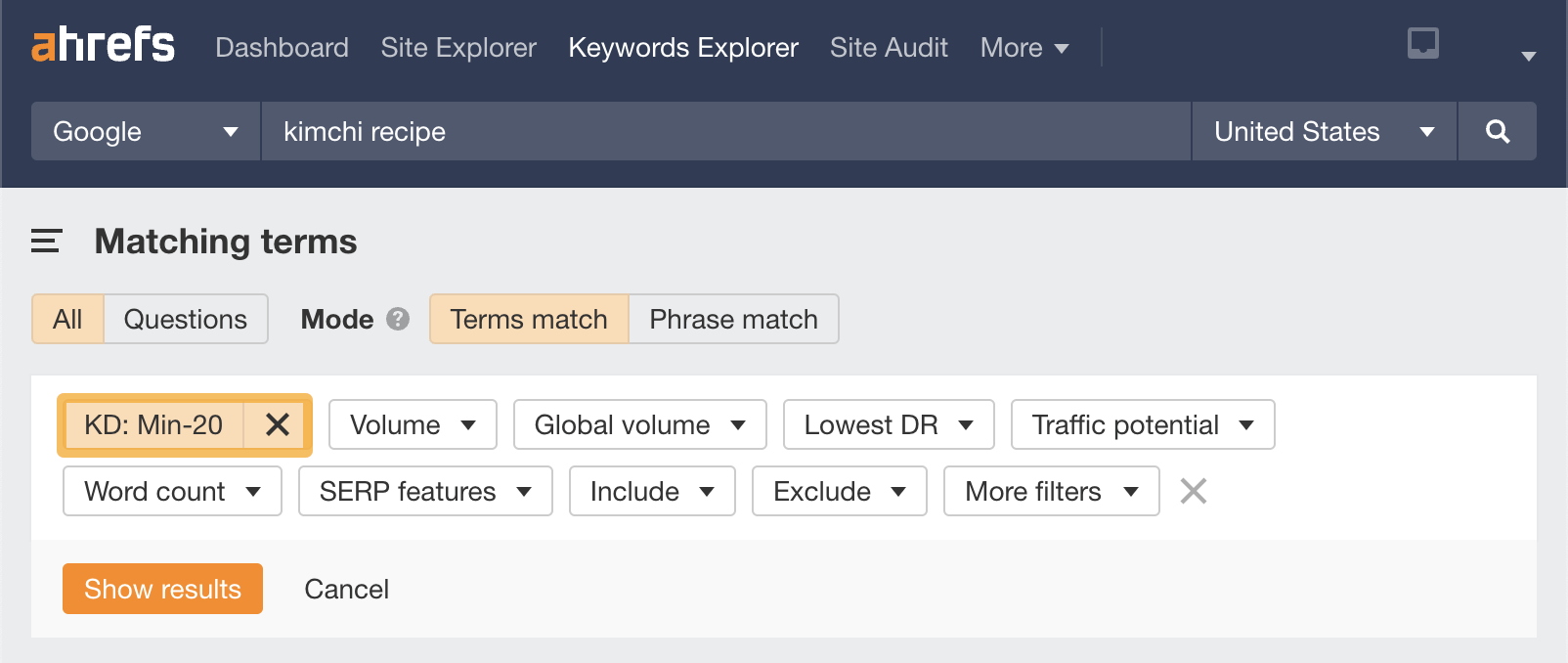
Once we have applied the filter, we can see more green KD scores—meaning these keywords are lower competition.

If we wrote articles about these specific keyword topics, we’d have a better chance of ranking than simply writing about “kimchi recipe” and all the initial matching terms.
3. To identify high traffic potential keywords
Open up a new instance of Keywords Explorer, plug in the keyword “kimchi recipe,” and head over to the Matching terms report.
Then add a Traffic Potential filter from 0 to 30,000.
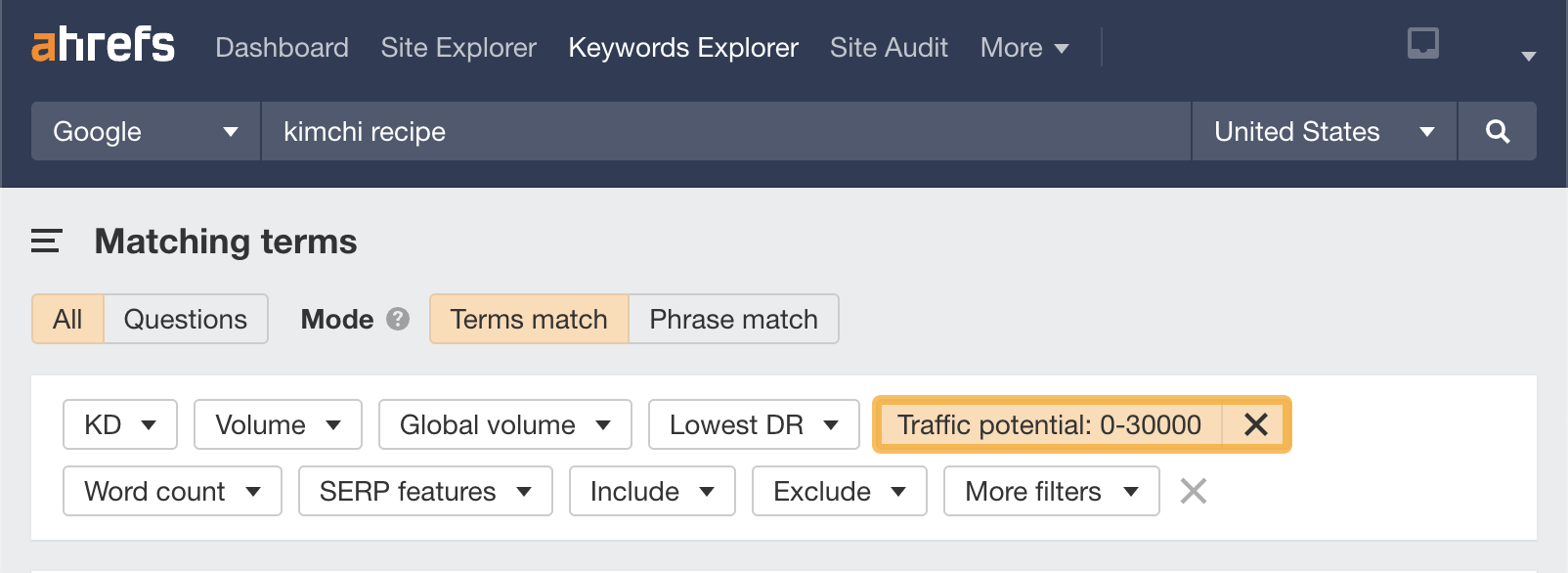
Once we have done this, we can see the keywords with the highest organic TP.

Let’s say we wanted to take it further and filter for the lowest KD keywords in this list.
We can do that by adding a KD filter with a max score of 20. Once we have done that, we’ll get the following list.

Having keywords to target that have a low KD and a high TP means that you will stand a good chance of ranking for them in Google.
4. To identify content gaps
Another way you can find opportunities for content is to use Ahrefs’ Content Gap tool.
For the next example, I’m going to stick with the “kimchi recipes” keyword. I’ll pretend I’m the BBC Good Food website, and I want to expand the Korean food content.
To do this, I’ve entered the top competitors of the “kimchi recipes” SERP into the Content Gap report and clicked the “Show keywords” button.

Once the report has been generated, I’ll filter it again using the keyword “korean,” as I only want to filter by Korean food content.
Here’s what it looks like:
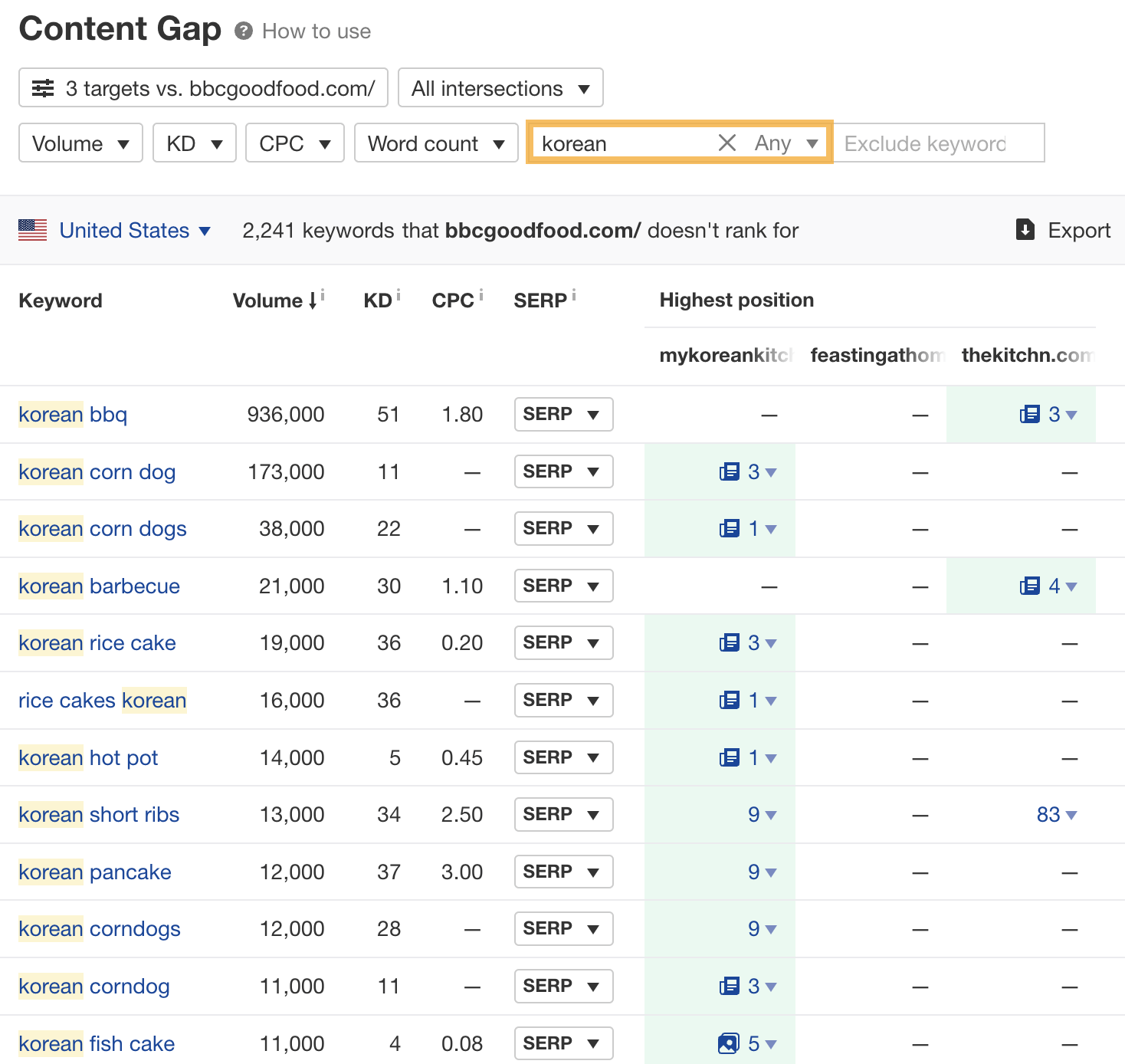
We can see how easy it is to find keyword opportunities that other websites rank for, but your website doesn’t.
Should you use SEO writing tools to create content? Well, it depends.
Writing content with SEO writing tools is still a contentious topic—especially if we are talking about AI tools like ChatGPT.
Here’s why I think you should be cautious when using these tools:
- They don’t always fact-check.
- They make up the data sometimes.
- Sometimes they’ll lie if they don’t know the answer.
- They draw from internet sources that are often incorrect themselves.
- They aren’t always good with technical content.
If these bullet points were describing a potential content writer—you probably wouldn’t hire them.
But before you cancel your AI subscriptions, it’s worth noting that there’s a place for tools like these. But they are best used cautiously, in my opinion.
Here are three examples of where I would use SEO writing tools to help write basic content.
1. To create article outlines
SEO writing tools can help give you a framework to build your content around, but they typically need a lot of tweaking.
Here’s an example of me using NeuralText to create an article outline:
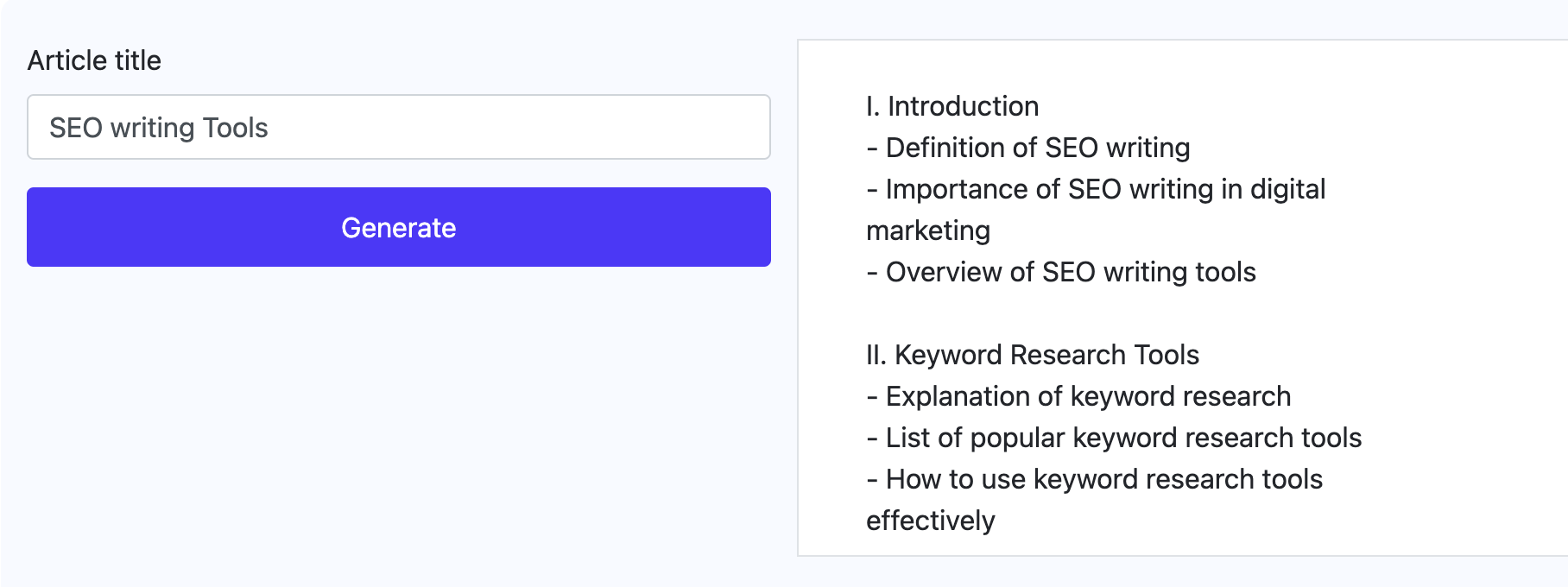
And let’s repeat this with ChatGPT:

We can see that with NeuralText, it’s gone for a standard structure. With ChatGPT, it’s not that different but provides a bit more detail.
If we compare this against the structure of the top-ranking pages in Google, we can see that the structure of the top-ranking pages is different.
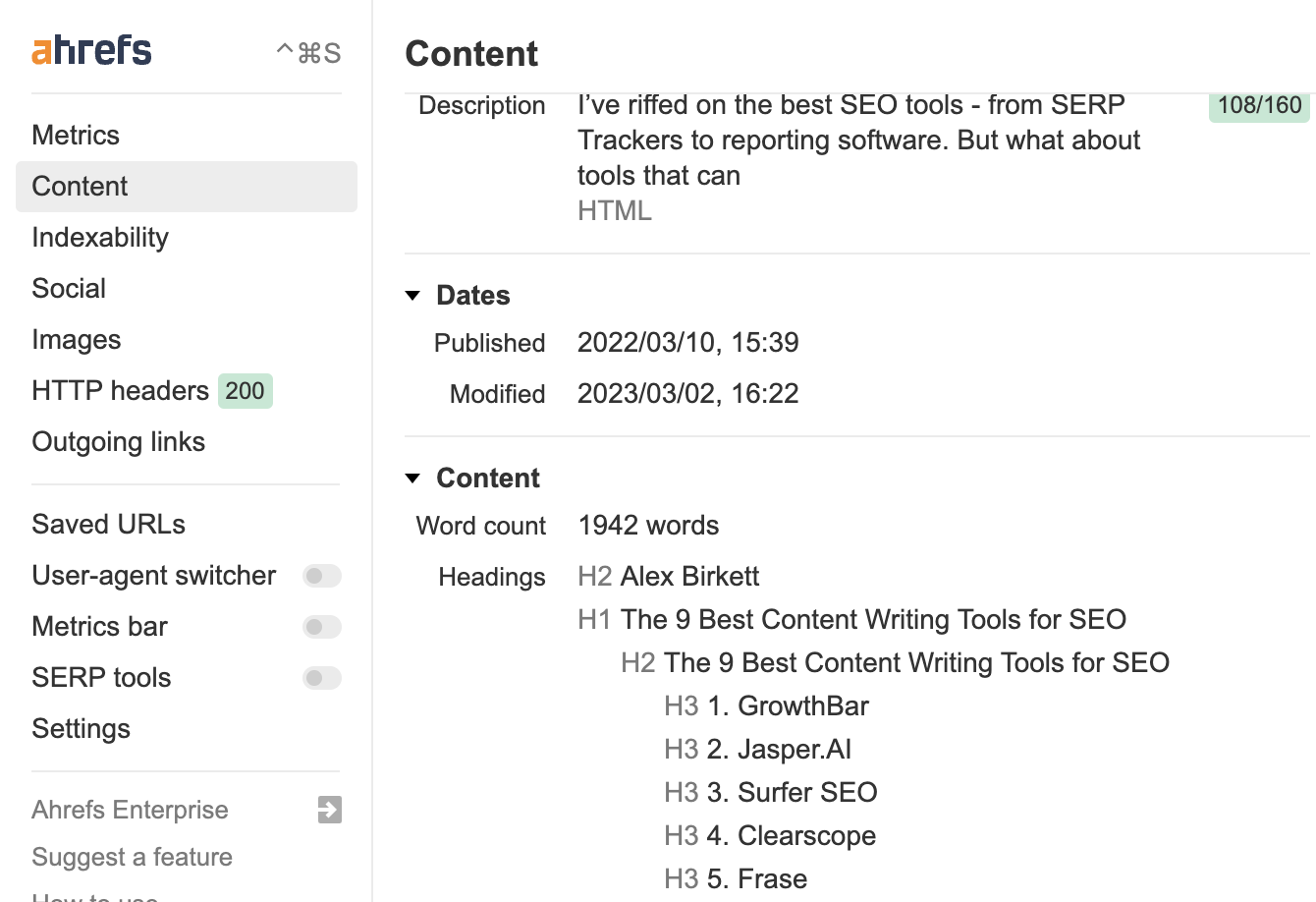
In this particular example, it’s ~2000 words on the best SEO content writing tools. There’s no definition or importance of the tools; it’s just straight into the list of the top tools.
So should you use AI tools for outlines? Or is it better to write your own from scratch? It depends on how technical the writing is.
If your writing is non-technical, then an outline that covers the definition, importance of, and role of may be more than enough. But more specific details are often needed for more technical topics like SEO.
2. To create meta descriptions at scale
When it comes to writing basic content like meta descriptions, tools like ChatGPT—and, more specifically, the OpenAI API can help you speed up the content creation process.
Here’s a quick example of some meta descriptions I generated programmatically using a Google Apps script I found on GitHub.
Assuming your content is in cell A2, you can drag the formula below down, and it will automatically generate the meta descriptions for you using the API.
Place the following code in cell B2 after running the script:
=AI("write an interesting meta description for cell("&[TITLE CELL NUMBER]&"))")
Replace [TITLE CELL NUMBER] with your cell reference. You can change the part stating “write an interesting meta description for cell” to any prompt, but I’ve kept it very basic.
Here’s the output:
| Title | Meta description |
|---|---|
| How many seats does a Tesla have? | Find out how many seats are in a Tesla car! Learn about the different models and their seating capacity to determine the perfect car for your needs. |
| How many seats does a Tesla Model X have? | Discover how many seats the Tesla Model X has and learn more about this revolutionary electric vehicle. Get the facts and find out why the Tesla Model X is the perfect car for your family. |
| How many teeth does a megalodon have? | This article explores the fascinating world of the megalodon, the largest shark to ever exist. Learn about how many teeth it had and how it compares to modern sharks. |
| How many numbers does a credit card have? | This article answers the question of how many numbers are on a credit card. Learn the answer, plus other interesting facts about credit cards and their uses. |
| How many parameters does a normal distribution have? | Discover the answer to the question “How many parameters does a normal distribution have?” and learn more about the fascinating world of cell distributions. |
Again, I’m not saying these are the greatest meta descriptions in the world, but if you have a large website, this can be an efficient (and cost-effective) way to write them at scale.
But what does Google think about this? Well, it is completely fine with programmatically made meta descriptions. But as always, remember to follow its general guidelines around this topic.
3. To create newsletters or email templates
Another example of basic content is newsletters and email templates. Creating structured newsletters or emails with a tool like ChatGPT is a breeze.
Here’s an example of it in action:

And you can also use it for email templates as well.
Here’s a quick example:
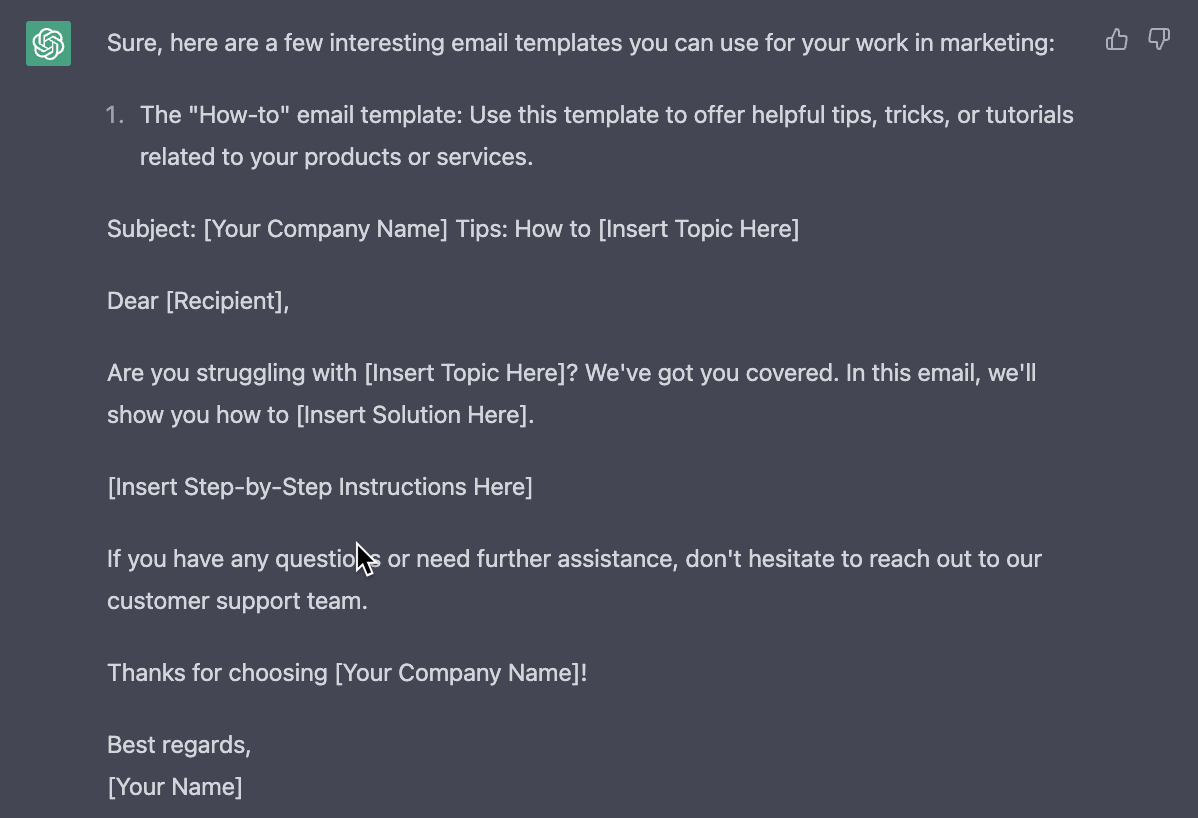
As we saw with the outlines, the content here is basic and likely needs improving. But for simple frameworks, it can be useful.
My favorite SEO writing tool for making my content more readable is Grammarly.
Here’s what I like about it.
Grammarly
It’s a paid tool that helps improve your grammar. I find it helpful to use while writing or editing my content.
When creating a new document, you are encouraged to set goals. This allows the tool to tailor its suggestions based on your goals and audience.
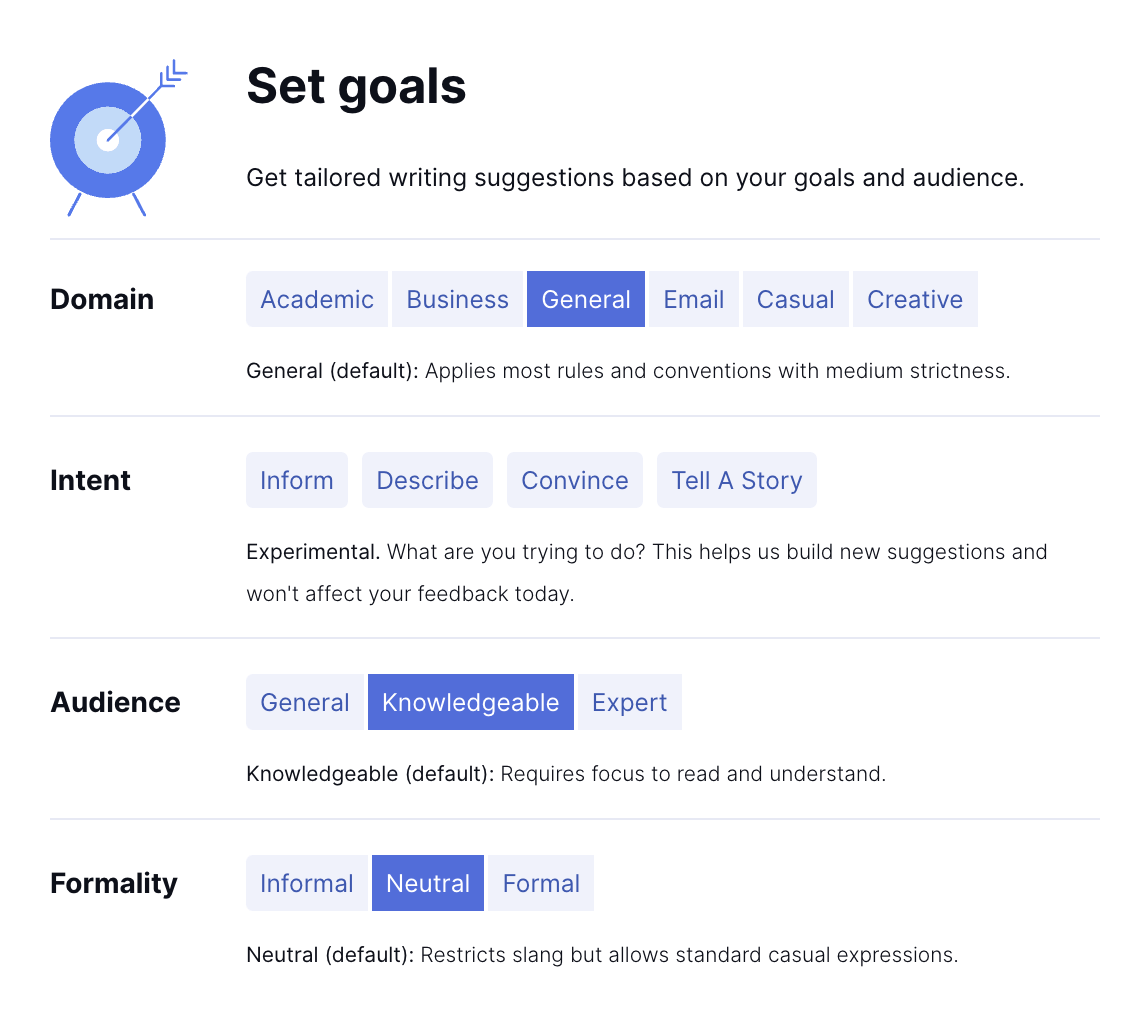
Once you’ve set your preferences, Grammarly will score your writing and provide suggestions on clarity, engagement, style, delivery, and correctness.
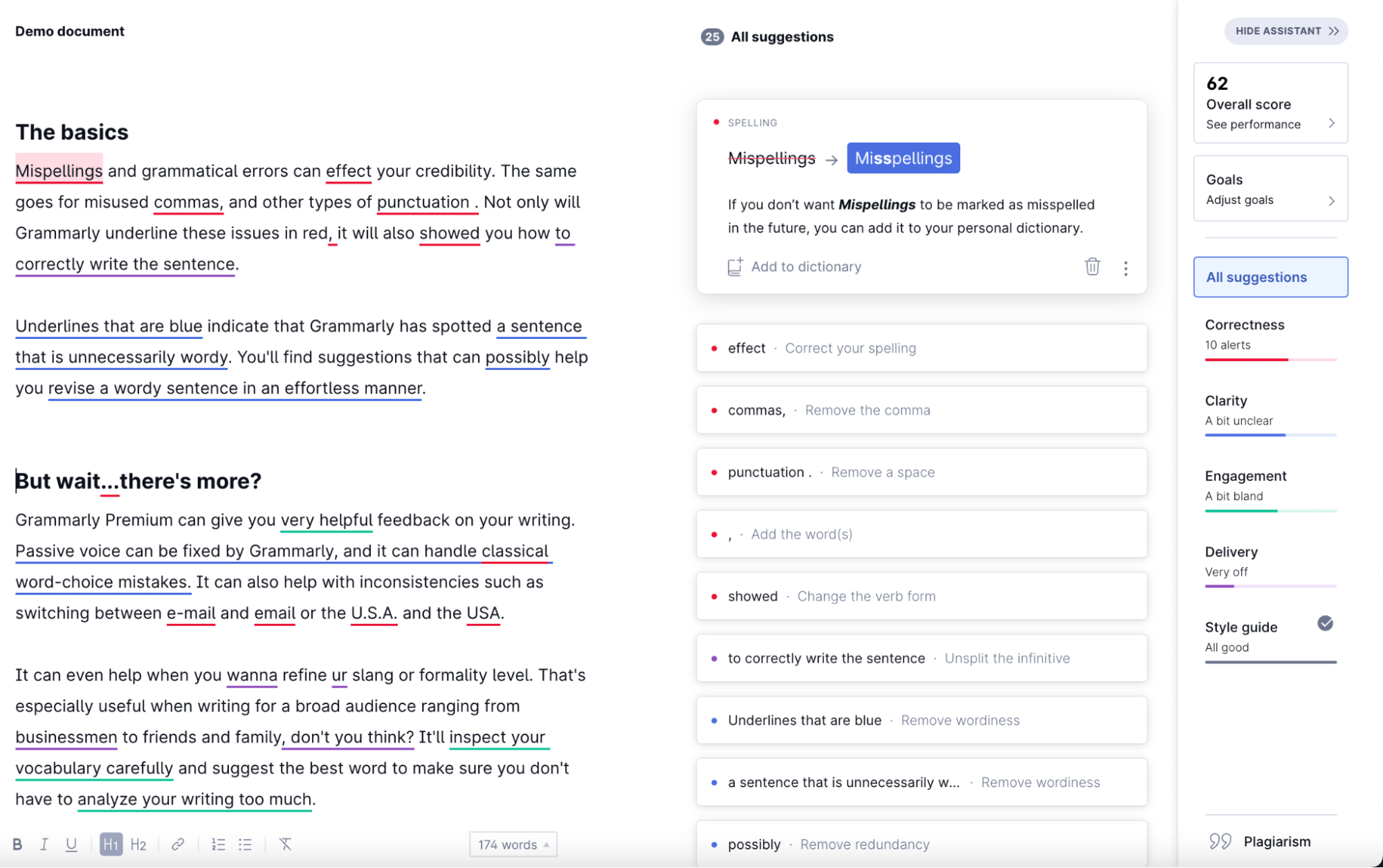
It’s a helpful writing tool that many content teams have built into their proofreading process.
Once you have checked a few documents using Grammarly, you can get an analytics breakdown.

It shows how many sessions you have improved. It has helped me improve 68% of my sessions—quite a lot.
I’ve used Grammarly a lot in the last year or so, and I can testify that it’s usually accurate. But I noticed once that it suggested replacing “links” with “sausages.”
This is a good example of where you still have to moderate the output and not blindly accept the AI suggestions all of the time.
Hemingway
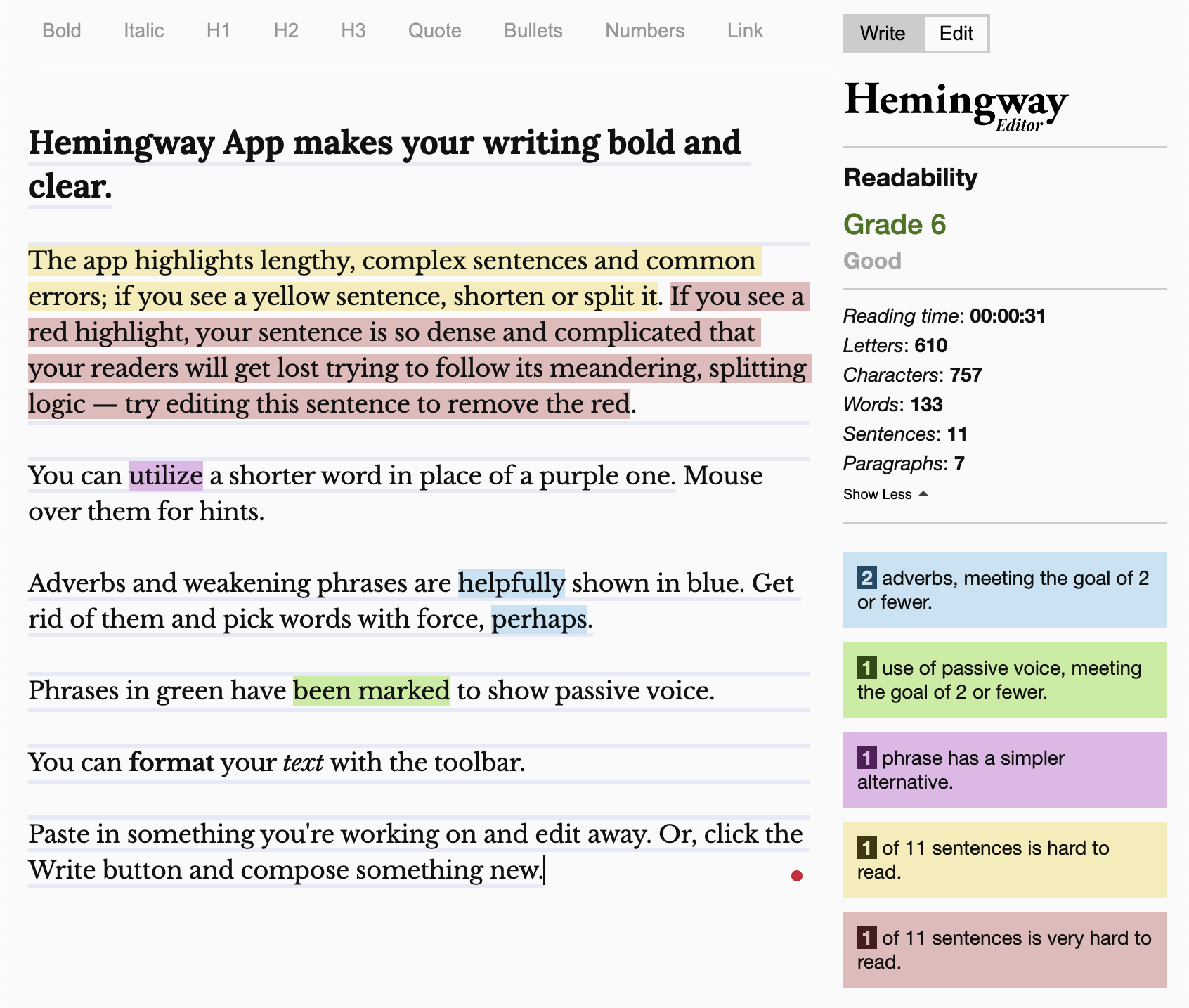
Hemingway is another SEO writing tool you can use to help make your writing clearer and more concise. To get started, head over to Hemingway’s website, paste in your content, and it will analyze it for readability.
What I like about this tool is that it is clean, clear, and simple to use. Also, all the key information I need is in the right-hand column, meaning I don’t have to check word count through a menu or use other tools to analyze the writing.
In my opinion, any SEO writing tool that significantly helps improve your content’s quality is worth learning how to use.
Another use for SEO writing tools is as a creative sparring partner.
Sometimes, it’s hard to get that spark of inspiration when writing.
But what if you could ask someone influential to write for you? Well, you can do this with AI—almost.
Get some tone of voice inspiration
Here’s an example of me asking ChatGPT to write in the style of David Ogilvy:
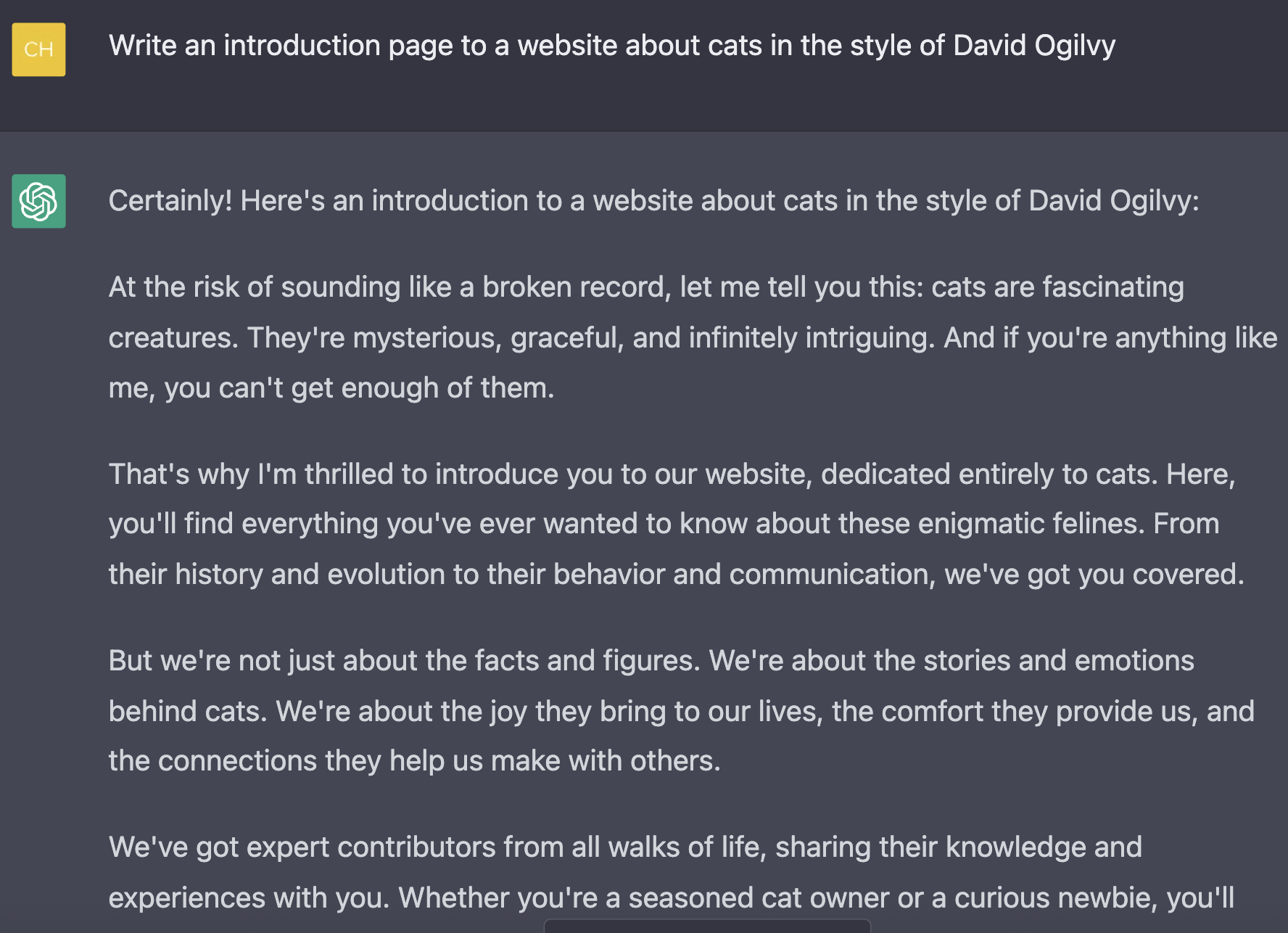
Using this type of prompt in ChatGPT allows you to get creative inspiration from famous copywriters or any other distinctive personalities you can think of.
Here’s a more extreme example of the same prompt in the style of Gordon Ramsay:

The options here are limitless, and your writing’s tone of voice is only limited by your imagination and creativity.
The bottom line is that ChatGPT can help you develop interesting ideas you might not have thought of initially.
Traditional content writing can be slow. It can sometimes be painful.
And it can take a lot of time.
But using SEO writing tools helps keep the momentum going.
You’ll likely get better results if you target your keywords correctly, write basic content, and proofread it using SEO writing tools.
Become the “content cyborg”
The folks at Animalz were the first to coin this phrase, to my knowledge. And it’s one that has been stuck in my head this past year.
The content cyborg refers to the use of AI tools, but my definition goes broader—to SEO writing tools in general.
I think you should use tools that help you improve your content process and make it more efficient without sacrificing your overall content quality.
If you can speed up your content process, you will increase your output and work more efficiently.
Most of you won’t dream of using a typewriter to write blog content these days—it just doesn’t make sense. It’s too slow, inefficient, and not connected to the internet!
So when it comes to SEO writing tools, the question is not whether you should or should not use them, in my opinion. It’s more about how you can use them to increase the efficiency of your work to achieve better quality output.
Ahrefs’ blog has had an impressive increase in organic traffic over the past year.
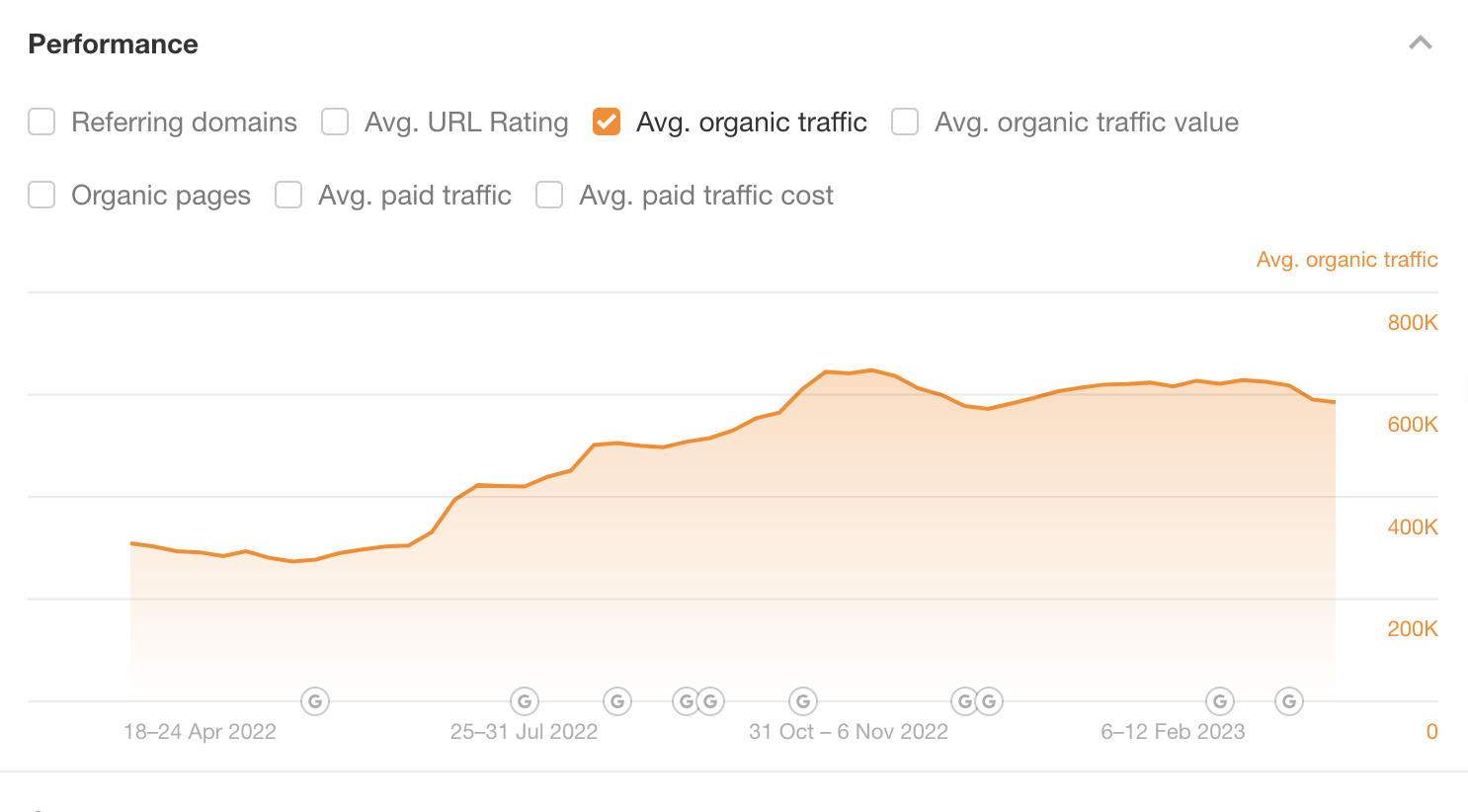
Looking at last year’s Organic traffic report in Site Explorer, we can see we have increased our blog traffic by ~108% year on year.
But how much of this success is due to the SEO writing tools we use? Well, it’s hard to say exactly. But we do know that we use them to help create our content.
The most measurable example of us using SEO writing tools to improve our content is likely Grammarly.
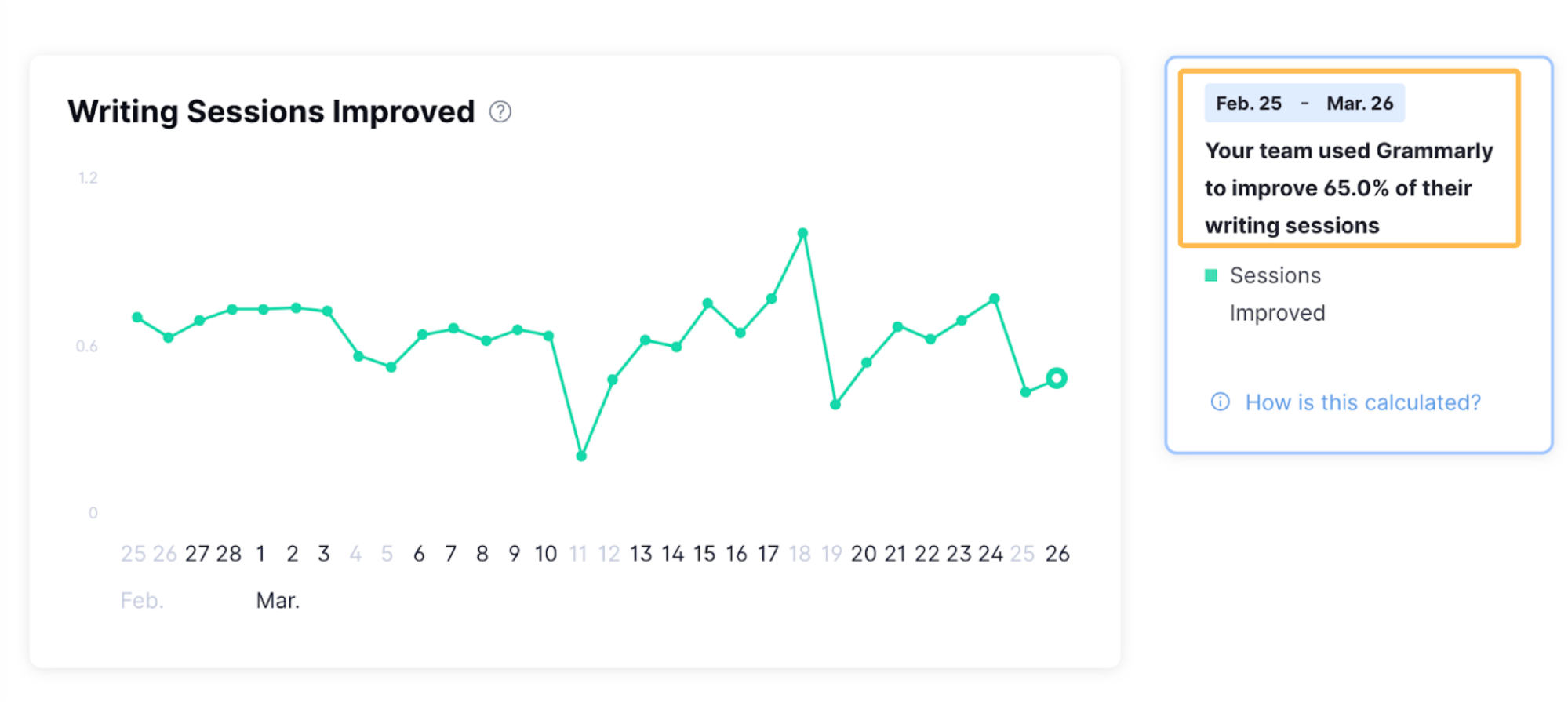
According to its analytics report, its suggestions have positively impacted 65% of our writers’ sessions in the last month alone.
Although we can’t directly attribute any traffic increase to any particular SEO writing tool, it’s likely to have contributed to a positive experience for our readers. This, in turn, might have helped to drive more traffic to the site in the last year.
Final thoughts
SEO writing tools are useful for many tasks. But you need to know how to use them effectively to get results.
But do you really need SEO writing tools? Well, yes, you do. But only if you use them properly. They can help you become more efficient at writing, increase output, and enhance content in ways you wouldn’t have thought of before.
Got more questions? Ping me on Twitter. 🙂
SEO
How To Write ChatGPT Prompts To Get The Best Results

ChatGPT is a game changer in the field of SEO. This powerful language model can generate human-like content, making it an invaluable tool for SEO professionals.
However, the prompts you provide largely determine the quality of the output.
To unlock the full potential of ChatGPT and create content that resonates with your audience and search engines, writing effective prompts is crucial.
In this comprehensive guide, we’ll explore the art of writing prompts for ChatGPT, covering everything from basic techniques to advanced strategies for layering prompts and generating high-quality, SEO-friendly content.
Writing Prompts For ChatGPT
What Is A ChatGPT Prompt?
A ChatGPT prompt is an instruction or discussion topic a user provides for the ChatGPT AI model to respond to.
The prompt can be a question, statement, or any other stimulus to spark creativity, reflection, or engagement.
Users can use the prompt to generate ideas, share their thoughts, or start a conversation.
ChatGPT prompts are designed to be open-ended and can be customized based on the user’s preferences and interests.
How To Write Prompts For ChatGPT
Start by giving ChatGPT a writing prompt, such as, “Write a short story about a person who discovers they have a superpower.”
ChatGPT will then generate a response based on your prompt. Depending on the prompt’s complexity and the level of detail you requested, the answer may be a few sentences or several paragraphs long.
Use the ChatGPT-generated response as a starting point for your writing. You can take the ideas and concepts presented in the answer and expand upon them, adding your own unique spin to the story.
If you want to generate additional ideas, try asking ChatGPT follow-up questions related to your original prompt.
For example, you could ask, “What challenges might the person face in exploring their newfound superpower?” Or, “How might the person’s relationships with others be affected by their superpower?”
Remember that ChatGPT’s answers are generated by artificial intelligence and may not always be perfect or exactly what you want.
However, they can still be a great source of inspiration and help you start writing.
Must-Have GPTs Assistant
I recommend installing the WebBrowser Assistant created by the OpenAI Team. This tool allows you to add relevant Bing results to your ChatGPT prompts.
This assistant adds the first web results to your ChatGPT prompts for more accurate and up-to-date conversations.
It is very easy to install in only two clicks. (Click on Start Chat.)
For example, if I ask, “Who is Vincent Terrasi?,” ChatGPT has no answer.
With WebBrower Assistant, the assistant creates a new prompt with the first Bing results, and now ChatGPT knows who Vincent Terrasi is.
 Screenshot from ChatGPT, March 2023
Screenshot from ChatGPT, March 2023You can test other GPT assistants available in the GPTs search engine if you want to use Google results.
Master Reverse Prompt Engineering
ChatGPT can be an excellent tool for reverse engineering prompts because it generates natural and engaging responses to any given input.
By analyzing the prompts generated by ChatGPT, it is possible to gain insight into the model’s underlying thought processes and decision-making strategies.
One key benefit of using ChatGPT to reverse engineer prompts is that the model is highly transparent in its decision-making.
This means that the reasoning and logic behind each response can be traced, making it easier to understand how the model arrives at its conclusions.
Once you’ve done this a few times for different types of content, you’ll gain insight into crafting more effective prompts.
Prepare Your ChatGPT For Generating Prompts
First, activate the reverse prompt engineering.
- Type the following prompt: “Enable Reverse Prompt Engineering? By Reverse Prompt Engineering I mean creating a prompt from a given text.”
 Screenshot from ChatGPT, March 2023
Screenshot from ChatGPT, March 2023ChatGPT is now ready to generate your prompt. You can test the product description in a new chatbot session and evaluate the generated prompt.
- Type: “Create a very technical reverse prompt engineering template for a product description about iPhone 11.”
 Screenshot from ChatGPT, March 2023
Screenshot from ChatGPT, March 2023The result is amazing. You can test with a full text that you want to reproduce. Here is an example of a prompt for selling a Kindle on Amazon.
- Type: “Reverse Prompt engineer the following {product), capture the writing style and the length of the text :
product =”
 Screenshot from ChatGPT, March 2023
Screenshot from ChatGPT, March 2023I tested it on an SEJ blog post. Enjoy the analysis – it is excellent.
- Type: “Reverse Prompt engineer the following {text}, capture the tone and writing style of the {text} to include in the prompt :
text = all text coming from https://www.searchenginejournal.com/google-bard-training-data/478941/”
 Screenshot from ChatGPT, March 2023
Screenshot from ChatGPT, March 2023But be careful not to use ChatGPT to generate your texts. It is just a personal assistant.
Go Deeper
Prompts and examples for SEO:
- Keyword research and content ideas prompt: “Provide a list of 20 long-tail keyword ideas related to ‘local SEO strategies’ along with brief content topic descriptions for each keyword.”
- Optimizing content for featured snippets prompt: “Write a 40-50 word paragraph optimized for the query ‘what is the featured snippet in Google search’ that could potentially earn the featured snippet.”
- Creating meta descriptions prompt: “Draft a compelling meta description for the following blog post title: ’10 Technical SEO Factors You Can’t Ignore in 2024′.”
Important Considerations:
- Always Fact-Check: While ChatGPT can be a helpful tool, it’s crucial to remember that it may generate inaccurate or fabricated information. Always verify any facts, statistics, or quotes generated by ChatGPT before incorporating them into your content.
- Maintain Control and Creativity: Use ChatGPT as a tool to assist your writing, not replace it. Don’t rely on it to do your thinking or create content from scratch. Your unique perspective and creativity are essential for producing high-quality, engaging content.
- Iteration is Key: Refine and revise the outputs generated by ChatGPT to ensure they align with your voice, style, and intended message.
Additional Prompts for Rewording and SEO:
– Rewrite this sentence to be more concise and impactful.
– Suggest alternative phrasing for this section to improve clarity.
– Identify opportunities to incorporate relevant internal and external links.
– Analyze the keyword density and suggest improvements for better SEO.
Remember, while ChatGPT can be a valuable tool, it’s essential to use it responsibly and maintain control over your content creation process.
Experiment And Refine Your Prompting Techniques
Writing effective prompts for ChatGPT is an essential skill for any SEO professional who wants to harness the power of AI-generated content.
Hopefully, the insights and examples shared in this article can inspire you and help guide you to crafting stronger prompts that yield high-quality content.
Remember to experiment with layering prompts, iterating on the output, and continually refining your prompting techniques.
This will help you stay ahead of the curve in the ever-changing world of SEO.
More resources:
Featured Image: Tapati Rinchumrus/Shutterstock
SEO
Measuring Content Impact Across The Customer Journey

Understanding the impact of your content at every touchpoint of the customer journey is essential – but that’s easier said than done. From attracting potential leads to nurturing them into loyal customers, there are many touchpoints to look into.
So how do you identify and take advantage of these opportunities for growth?
Watch this on-demand webinar and learn a comprehensive approach for measuring the value of your content initiatives, so you can optimize resource allocation for maximum impact.
You’ll learn:
- Fresh methods for measuring your content’s impact.
- Fascinating insights using first-touch attribution, and how it differs from the usual last-touch perspective.
- Ways to persuade decision-makers to invest in more content by showcasing its value convincingly.
With Bill Franklin and Oliver Tani of DAC Group, we unravel the nuances of attribution modeling, emphasizing the significance of layering first-touch and last-touch attribution within your measurement strategy.
Check out these insights to help you craft compelling content tailored to each stage, using an approach rooted in first-hand experience to ensure your content resonates.
Whether you’re a seasoned marketer or new to content measurement, this webinar promises valuable insights and actionable tactics to elevate your SEO game and optimize your content initiatives for success.
View the slides below or check out the full webinar for all the details.
SEO
How to Find and Use Competitor Keywords

Competitor keywords are the keywords your rivals rank for in Google’s search results. They may rank organically or pay for Google Ads to rank in the paid results.
Knowing your competitors’ keywords is the easiest form of keyword research. If your competitors rank for or target particular keywords, it might be worth it for you to target them, too.
There is no way to see your competitors’ keywords without a tool like Ahrefs, which has a database of keywords and the sites that rank for them. As far as we know, Ahrefs has the biggest database of these keywords.
How to find all the keywords your competitor ranks for
- Go to Ahrefs’ Site Explorer
- Enter your competitor’s domain
- Go to the Organic keywords report
The report is sorted by traffic to show you the keywords sending your competitor the most visits. For example, Mailchimp gets most of its organic traffic from the keyword “mailchimp.”


Since you’re unlikely to rank for your competitor’s brand, you might want to exclude branded keywords from the report. You can do this by adding a Keyword > Doesn’t contain filter. In this example, we’ll filter out keywords containing “mailchimp” or any potential misspellings:


If you’re a new brand competing with one that’s established, you might also want to look for popular low-difficulty keywords. You can do this by setting the Volume filter to a minimum of 500 and the KD filter to a maximum of 10.


How to find keywords your competitor ranks for, but you don’t
- Go to Competitive Analysis
- Enter your domain in the This target doesn’t rank for section
- Enter your competitor’s domain in the But these competitors do section


Hit “Show keyword opportunities,” and you’ll see all the keywords your competitor ranks for, but you don’t.


You can also add a Volume and KD filter to find popular, low-difficulty keywords in this report.


How to find keywords multiple competitors rank for, but you don’t
- Go to Competitive Analysis
- Enter your domain in the This target doesn’t rank for section
- Enter the domains of multiple competitors in the But these competitors do section


You’ll see all the keywords that at least one of these competitors ranks for, but you don’t.


You can also narrow the list down to keywords that all competitors rank for. Click on the Competitors’ positions filter and choose All 3 competitors:


- Go to Ahrefs’ Site Explorer
- Enter your competitor’s domain
- Go to the Paid keywords report


This report shows you the keywords your competitors are targeting via Google Ads.
Since your competitor is paying for traffic from these keywords, it may indicate that they’re profitable for them—and could be for you, too.
You know what keywords your competitors are ranking for or bidding on. But what do you do with them? There are basically three options.
1. Create pages to target these keywords
You can only rank for keywords if you have content about them. So, the most straightforward thing you can do for competitors’ keywords you want to rank for is to create pages to target them.
However, before you do this, it’s worth clustering your competitor’s keywords by Parent Topic. This will group keywords that mean the same or similar things so you can target them all with one page.
Here’s how to do that:
- Export your competitor’s keywords, either from the Organic Keywords or Content Gap report
- Paste them into Keywords Explorer
- Click the “Clusters by Parent Topic” tab


For example, MailChimp ranks for keywords like “what is digital marketing” and “digital marketing definition.” These and many others get clustered under the Parent Topic of “digital marketing” because people searching for them are all looking for the same thing: a definition of digital marketing. You only need to create one page to potentially rank for all these keywords.


2. Optimize existing content by filling subtopics
You don’t always need to create new content to rank for competitors’ keywords. Sometimes, you can optimize the content you already have to rank for them.
How do you know which keywords you can do this for? Try this:
- Export your competitor’s keywords
- Paste them into Keywords Explorer
- Click the “Clusters by Parent Topic” tab
- Look for Parent Topics you already have content about
For example, if we analyze our competitor, we can see that seven keywords they rank for fall under the Parent Topic of “press release template.”


If we search our site, we see that we already have a page about this topic.


If we click the caret and check the keywords in the cluster, we see keywords like “press release example” and “press release format.”


To rank for the keywords in the cluster, we can probably optimize the page we already have by adding sections about the subtopics of “press release examples” and “press release format.”
3. Target these keywords with Google Ads
Paid keywords are the simplest—look through the report and see if there are any relevant keywords you might want to target, too.
For example, Mailchimp is bidding for the keyword “how to create a newsletter.”


If you’re ConvertKit, you may also want to target this keyword since it’s relevant.
If you decide to target the same keyword via Google Ads, you can hover over the magnifying glass to see the ads your competitor is using.


You can also see the landing page your competitor directs ad traffic to under the URL column.


Learn more
Check out more tutorials on how to do competitor keyword analysis:
-

 PPC5 days ago
PPC5 days ago19 Best SEO Tools in 2024 (For Every Use Case)
-
SEARCHENGINES7 days ago
Daily Search Forum Recap: April 17, 2024
-
SEARCHENGINES6 days ago
Daily Search Forum Recap: April 18, 2024
-
SEARCHENGINES5 days ago
Daily Search Forum Recap: April 19, 2024
-

 MARKETING6 days ago
MARKETING6 days agoEcommerce evolution: Blurring the lines between B2B and B2C
-

 SEO6 days ago
SEO6 days ago2024 WordPress Vulnerability Report Shows Errors Sites Keep Making
-

 WORDPRESS5 days ago
WORDPRESS5 days agoHow to Make $5000 of Passive Income Every Month in WordPress
-

 WORDPRESS6 days ago
WORDPRESS6 days ago10 Amazing WordPress Design Resouces – WordPress.com News














